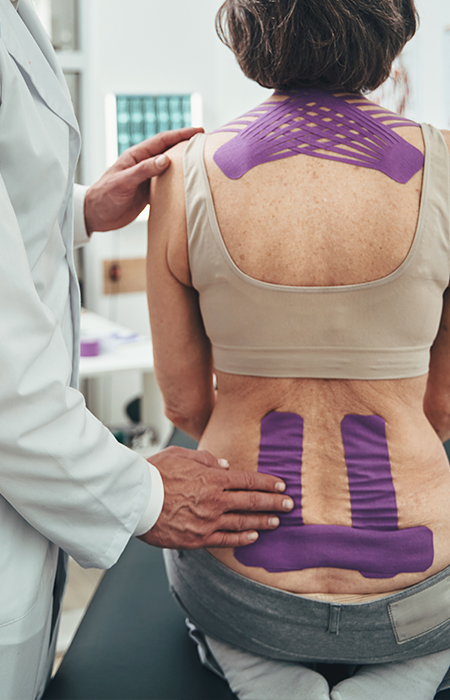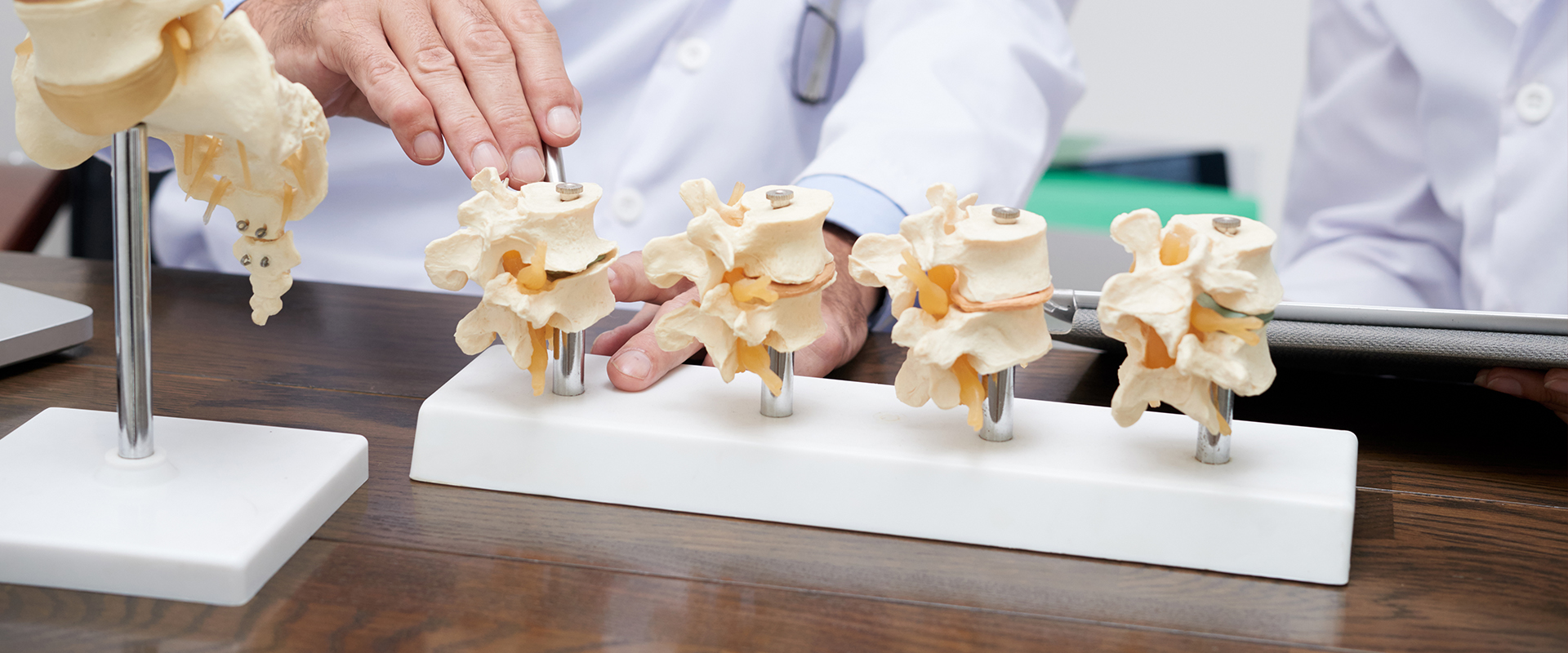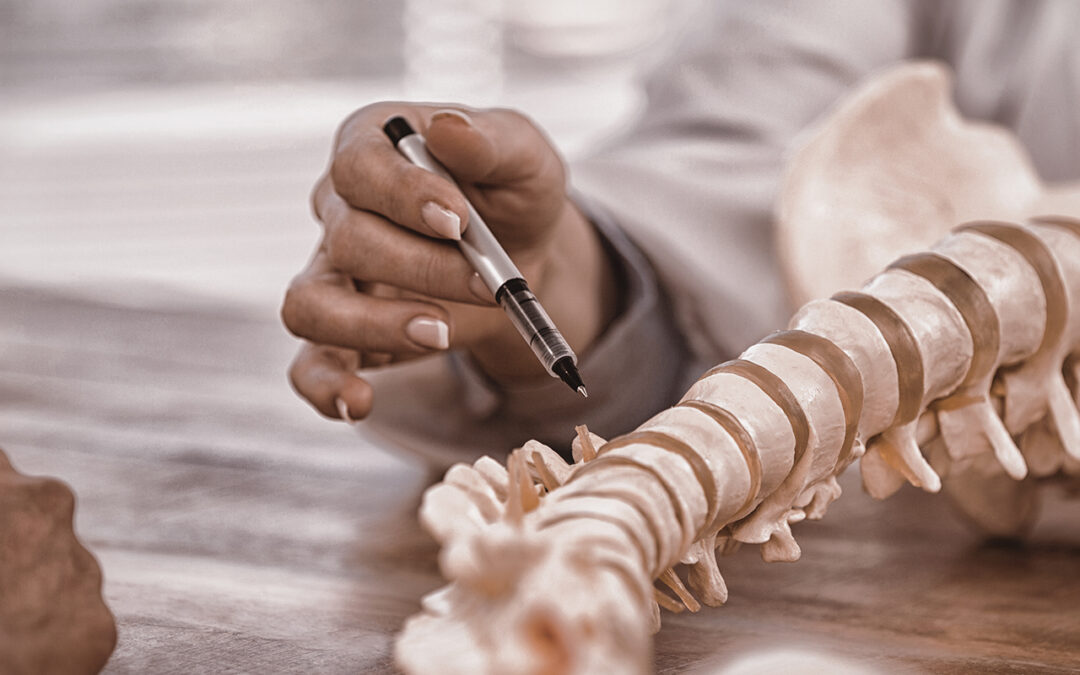By: Dr. Ahmad Elakil
Insight Hospital and Medical Center Chicago – If you consult a professional for any of the symptoms mentioned in our last blog, a doctor is likely to suspect a case of disc herniation. However, a detailed neurological exam is required to substantiate the symptoms, diagnose the condition, and develop a treatment plan that meets your needs. In today’s blog, I will explain some of the factors that surgeons consider when diagnosing a herniated disc and the wide range of treatment options that are available.
Diagnosing a Herniated Disc
In many cases when diagnosing a herniated disc, I conduct the positive straight leg raising test, which provokes pain by raising a straight leg while sitting or lying down. Patients report if they feel any unusual sensations in their leg or foot. I also require a series of blood tests to identify potential signs of infections or inflammation in the spinal structure.
X-rays are used to identify signs of degeneration within the spine. However, none of these methods will reveal the exact condition of the discs. An MRI scan or CT scan is conducted to identify whether the disc is herniated or not. In some cases, I prescribe a CT myelogram to further understand the structures that have been impacted by disc herniation.
A CT myelogram is a type of CT scan that is conducted after injecting contrast dye into the spinal canal. It enhances the visualization of the discs and provides a comprehensive picture of the spinal structures that have been affected. I typically rely on an electromyogram (EMG) to precisely identify the nerves that have been irritated.
Treating a Disc Herniation
A disc herniation can exert pressure and cause irritability in the nerves within the spine, which gives birth to shooting pain, fatigue, and exhaustion. It can also cause numbness in the arms, legs, and neck – alongside low back pain. In many cases, these symptoms can drastically decrease life quality and disrupt one’s lifestyle. However, in most cases the symptoms of a herniated disc begin to alleviate gradually on their own. The course of treatment also varies depending on the severity and intensity of the symptoms.
Here are some of the most common treatments for disc herniation:
Resting the Spine
I advise my patients to rest their spine for a few days. Patients must alter their routines and rest as much as possible. This will prove helpful in reducing inflammation and giving the back ample time to heal. It is crucial to avoid exercising, heavy lifting, physical exertion, or any activity that involves bending when you are experiencing low back pain.
In many cases, I will advise bed rest for a brief period. However, it is important to avoid staying in bed with no physical exertion for more than two days. Patients need to prevent stiffness from settling into the muscles and joints by moving around.
Most patients find relief from excruciating pain by using ice packs and heat compression. Simply placing a warm towel or ice pack against the affected area can eliminate low back pain and soreness. Try both methods and choose the one that is most effective for you.

Medications
I typically prescribe over the counter medications, such as Motrin, Advil, and Aleve, to reduce pain. These medications aid in alleviating pain and reducing the swelling. However, patients should never use over the counter painkillers for more than ten days without consulting a doctor.
Spine surgeons, including myself, typically advise against administering large quantities of nonsteroidal anti-inflammatory drugs (NSAIDs) because they can put you at risk for heart complications and bleeding. Narcotics such as oxycodone-acetaminophen or codeine may be prescribed if over the counter medications do not provide relief. However, these are short-term medications.
Patients who suffer from muscle spasms in the back are often prescribed muscle relaxants. Those who suffer from nerve damage are prescribed nerve pain-relieving medications, including duloxetine, pregabalin, amitriptyline, tramadol, and gabapentin.
Physical Therapy
Physical therapy is a significant component for healing low back pain, disc herniation, and any bodily injury because maintaining mobility is crucial to prevent joint and muscular stiffness. Many exercises prove effective at alleviating the symptoms of disc herniation. A physical therapist can help patients strengthen back muscles and speed up the healing process.

The following are some physical therapy treatments that prove beneficial for disc herniation:
- Electric muscle stimulation
- Ice and heat therapy
- Aerobic exercises (e.g. riding a stationary bike, walking)
- Stretching to enhance muscular flexibility
- Regular full-body massages
- Ultrasound therapy
Injections
When a patient does not feel any improvement from medications, physical therapy, and rest, I may prescribe steroid injections. These are known as epidural injections and they are injected into the space surrounded by the spinal nerve.
The steroid medication aids in reducing inflammation, relieving the pain caused by disc herniation and making it easier to move around. In most cases, I need to conduct a CT scan or an x-ray to identify the exact location where the steroid medication should be injected. Many patients require more than one epidural injection to alleviate pain.
Spine Surgery
Most patients suffering from disc herniation do not require a surgical procedure. As a spine surgery specialist, I strongly believe that it is crucial to exhaust other treatments and bed rest for at least four to six weeks before considering surgery. If pain does not improve during this period, surgery may be a viable treatment.
When should you consider spine surgery for disc herniation? Here are some of the conditions that may prompt patients to consider surgery:
- Pain relievers, epidural injections, and physical therapy have failed to provide relief
- Symptoms continue to aggravate and worsen
- You are unable to control your bladder or bowel movements
- You face difficulty standing or walking
Discectomy
A discectomy is a procedure where a spine surgeon removes the damaged disc to alleviate pressure exerted on the nerves. There are a variety of ways this surgery can be performed. For instance, I can perform an open discectomy by cutting into the patient’s neck or back.
A microdiscectomy is performed with a comparatively smaller incision. I normally insert a thin tube with a camera attached to one end to obtain a clear picture and remove the damaged disc.

Lumbar Laminotomy
As a spine surgeon, I may have to remove a tiny piece of bone attached to the vertebrae in certain cases. Known as the lamina, this bone creates a protective shield over the spine. Removing all or part of it can aid a spine surgeon in reaching the herniated disk.
A lumbar laminotomy alleviates pressure on the nerves and can eliminate sciatica and leg pain. The lamina can also be removed during a discectomy; however, in some cases I will conduct a separate surgery to take this out.
Spinal Fusion
After conducting a laminotomy or discectomy, I can fuse the two vertebrae together on either side of the discto add stability to the spinal structure. This process is known as a spinal fusion. Once a surgeon combines the two discs, it will prevent the bones from moving and eliminate pain.
Artificial Disc Surgery
As a neurosurgeon, I strongly believe that few patients are ideal candidates for an artificial disc surgery. This is primarily because the surgical procedure is only effective on certain discs located in the lower back area. However, if I believe this is a viable treatment option for you, I will replace the herniated disc with an artificial disc made of metal or plastic. The new disc will offer greater stability and support to the spine, making it easier to move around. It will also reduce low back pain and stiffness.
Treating a Cervical Herniated Disc
Cervical discs provide cushioning support to the cervical vertebrae located in the upper back and neck. A cervical herniated disc occurs when the nucleus pulposus is either ruptured or herniated through the cervical disc’s outer wall. This condition is typically caused by excessive stress, heavy lifting, or damaging injuries. It can cause severe pain when the damaged disc begins to exert pressure on the nerve roots or spinal canal.
Symptoms typically include:
- Weakness in the arms or hands
- Pain that travels down the arm to the hand or fingers
- Numbness in the shoulder, arms, or hands
- Tingling sensations in the shoulder, arms, or hands
The pain can be aggravated by adopting certain neck positions, altering posture, or simple neck movements. Symptoms of a cervical disc herniation are quite similar to other conditions, such as gout, carpal tunnel syndrome, or rotator cuff-related complications.
In certain cases, I have witnessed a cervical herniated disc causing the disc structure to exert pressure on the spinal cord. Known as spinal cord compression, this is an aggressive condition that requires pragmatic and proactive treatment alongside early detection.
Symptoms of spinal cord compression include:
- Tingling sensations or shock-related feelings traveling down the upper body toward the legs
- Awkwardness and stumbling while walking
- Motor complications while moving the arms and hands
Cervical disc herniation usually occurs in patients between 30-50 years old. However, I have also treated this condition in patients over 80. This is a relatively rare disc herniation condition because the aging process causes the disc to dry out, thereby preventing risks of rupture.
Diagnosing a cervical disc herniation requires a detailed physical examination. As a spine surgeon, I will examine mobility limitations, balance issues, pain-affected areas, lack of extremity reflexes, muscular fatigue, abnormal reflexes, and sensory loss. I will also conduct various tests, including x-rays, bone scans, CT scans, MRIs, and a CT myelogram.
The non-surgical treatment for a cervical herniated disc focuses on alleviating pain. Most cases of arm pain caused by a cervical herniated disc are resolved within a few weeks or months. Medications can be used to reduce and eventually eliminate the pain. Once pain improves, weakness, numbness, and tingling sensations will go away within a few weeks.
The following are treatment options for a cervical herniated disc:
- Physical therapy and exercises to eliminate pressure exerted on the nerve root
- Nonsteroidal anti-inflammatory drugs (NSAIDs) to reduce swelling and neck pain; analgesics
- Epidural steroid and nerve root injections to alleviate swelling and acute pain that travels to the hips and legs
- Spine surgery if pain lasts for more than six to twelve weeks, causing severe disability
- Anterior cervical discectomy and fusion (ACDF) or a cervical spine fusion
As a spine surgery specialist, I believe that surgery carries a very low risk of failure or postoperative complications with an experienced spine surgeon. I have witnessed a high success rate of surgery effectively alleviating pain and restoring mobility – particularly in patients who suffer from severe disability.
If you think you are suffering from symptoms of disc herniation, spinal pain, or painful sensations traveling down your back and legs, it is important to consult an expert immediately. Patients often neglect treatment and rely on over-the-counter medications to counter pain and experience temporary relief. To request an appointment with Dr. Ahmad Elakil or to learn more about the services offered at Insight Hospital & Medical Center in Chicago, Please call (312) 567-2273 or click here to find out about next day appointments.

References
https://www.spine-health.com/conditions/herniated-disc/surgery-options-a-herniated-disc
https://www.hopkinsmedicine.org/health/conditions-and-diseases/lumbar-disc-disease-herniated-disc
https://www.spine-health.com/video/video-can-herniated-discs-heal-their-own
https://www.medicinenet.com/herniated_disc/article.htm
https://www.webmd.com/pain-management/treatments-for-herniated-disk

